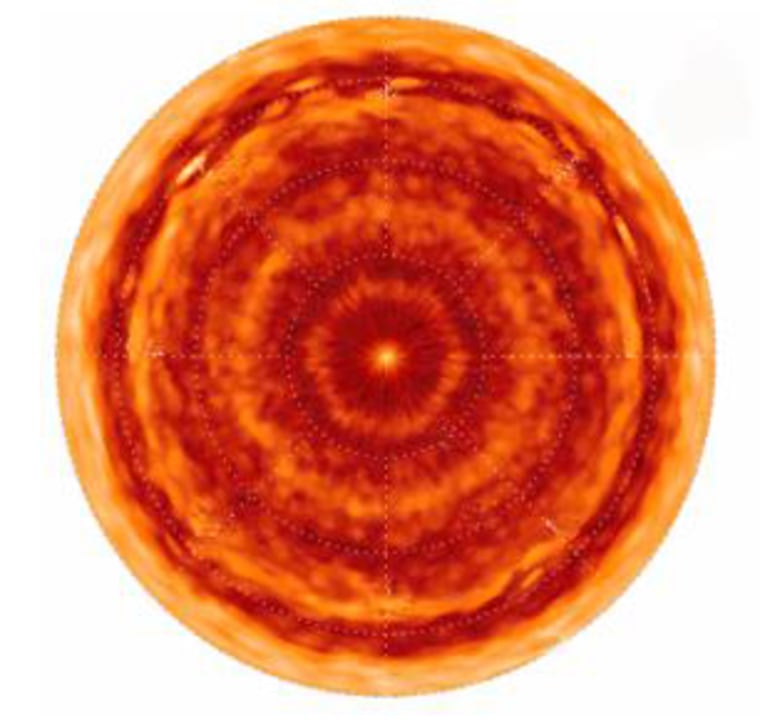Both of Saturn's poles have surprising swirling hotspots that persist even through years of polar winter, a new study reveals.
The hotspots are localized areas in Saturn's gaseous atmosphere over its poles that are considerably warmer than the surrounding air — they're actually about as warm as the atmosphere at Saturn's equator, said Leigh Fletcher of the University of Oxford.
The hotspot over the southern hemisphere was imaged by the Keck Observatories prior to arrival of the Cassini spacecraft, but the northern hemisphere has faced away from Earth for over a decade, so its hotspot was revealed only this year by Cassini.
Scientists had thought that solar irradiation might be generating the hotspot in the southern hemisphere (currently in its summer phase, facing the sun), but the existence of a similar hotspot in the northern hemisphere, which has been plunged in wintry darkness for many years, suggests that isn't the case.
Instead, dynamic processes in Saturn's atmosphere may create the hotspots, the new findings, detailed in the Jan. 4 issue of the journal Science, suggest, Fletcher says.
Air being sucked downward at the poles may cause the hotspots, while air moving upward in the atmosphere may be creating a cold "collar" around the hotspots. These air movements could be responsible for the raging hurricane-like storm imaged over the south pole in 2006.
As unusual as the hotspots themselves is the warm hexagonal ring of air surrounding the cold collar of the northern hemisphere hotspot. Stranger still is the lack of such a shape around the south pole.
"The mystery is ... why on Earth — or why on Saturn even — do we see a hexagon around the north pole, and not around the south pole?" Fletcher told SPACE.com.
Other missions have provided hints that Jupiter and Neptune have hotspots over their poles as well, suggesting they could be a feature of the atmospheres of all gaseous planets — even extrasolar planets, Fletcher said.
